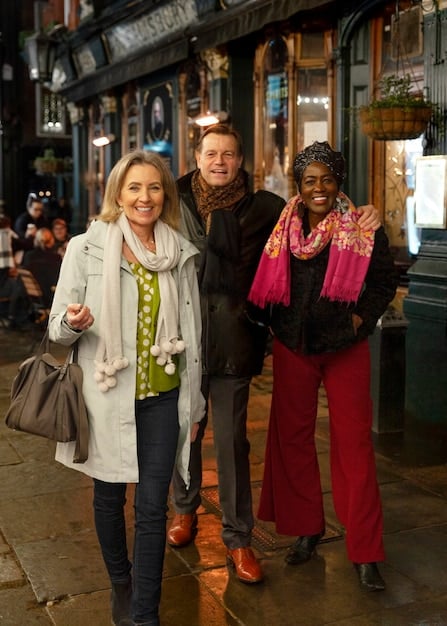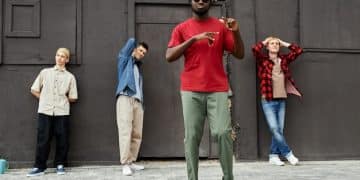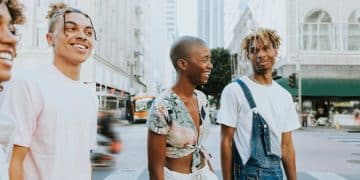The Psychology Behind Fashion Drops: Consumer Behavior & Trends

Fashion drops leverage psychological principles like scarcity and social influence to drive consumer behavior, creating hype and influencing future trends in the fashion industry.
Fashion drops have become a significant phenomenon in the fashion industry, captivating consumers and dictating trends. Understanding the psychology of fashion drops: understanding consumer behavior to predict future trends is crucial for businesses and consumers alike, revealing the underlying motivations that fuel this unique market dynamic.
Deciphering the Allure of Fashion Drops
Fashion drops are more than just product releases; they are carefully orchestrated events designed to tap into specific consumer behaviors. Psychological tactics play a pivotal role in creating the sense of urgency and exclusivity that drives demand.
Scarcity and Perceived Value
One of the primary drivers behind the success of fashion drops is the principle of scarcity. By releasing a limited quantity of items, brands create a perception of higher value and exclusivity.
- Limited Availability: Products are only available for a short period or in limited quantities, increasing their desirability.
- Exclusivity: Owning a piece from a fashion drop makes consumers feel special and part of an exclusive group.
- Fear of Missing Out (FOMO): The fear of missing out on a coveted item drives immediate purchasing decisions.

The perception of scarcity is further amplified through strategic marketing efforts, creating an environment where consumers are more likely to make impulsive decisions. This tactic effectively leverages the psychological principle that humans value things more when they are rare or difficult to obtain.
The Role of Social Influence and Community
Social influence plays a significant role in encouraging participation in fashion drops. People are naturally inclined to follow the behaviors and opinions of their peers and influencers.
The Power of Influencers
Influencers often play a crucial role in promoting fashion drops, using their credibility and reach to generate excitement and demand.
- Endorsements: When influencers endorse a product, their followers are more likely to consider purchasing it.
- Social Proof: Seeing others participate in fashion drops creates social proof, validating the purchase decision.
- Community Building: Fashion drops can foster a sense of community among consumers who share a passion for the brand and its products.
Brands often collaborate with influencers to create exclusive fashion drops, further amplifying the sense of exclusivity and desirability.
Psychological Triggers in Fashion Marketing
Fashion brands strategically employ various psychological triggers to attract consumers to fashion drops. This involves understanding how individuals process information and make decisions.

Cognitive Biases and Decision-Making
Cognitive biases, such as anchoring bias and framing effects, can strongly influence consumer decisions during fashion drops.
Anchoring bias occurs when individuals heavily rely on the first piece of information they receive, often the original price or a perceived value. Framing effects influence consumer choices based on how information is presented.
- Anchoring Bias: Setting a high initial price can make a discounted price during a fashion drop seem like a great deal.
- Framing Effects: Highlighting the limited availability of a product can encourage immediate purchase decisions.
- Loss Aversion: Emphasizing what consumers might miss out on can be a powerful motivator.
By understanding these cognitive biases, brands can strategically position their fashion drops to appeal to specific consumer motivations.
The Impact of Gamification and Loyalty Programs
Gamification and loyalty programs are increasingly common tactics used to enhance consumer engagement and drive participation in fashion drops. They leverage the psychological principles of reward and reinforcement.
Rewarding Early Adopters
Loyalty programs can provide early access to fashion drops for valued customers, creating a sense of exclusivity and rewarding long-term engagement.
Gamification elements, such as points, badges, and leaderboards, can make the shopping experience more engaging and competitive.
- Points and Rewards: Rewarding purchases with points that can be redeemed for discounts or exclusive access.
- Badges and Status: Offering badges or statuses for early adopters or frequent buyers.
- Competitions: Creating a sense of competition through leaderboards or time-sensitive challenges.
These strategies not only drive sales but also help to foster a stronger sense of brand loyalty and community.
Predicting Future Trends in Fashion Drops
Understanding the psychological drivers behind consumer behavior can provide valuable insights for predicting future trends in fashion drops. As consumer preferences evolve, brands must adapt their strategies to remain competitive.
The Rise of Personalization
Consumers are increasingly seeking personalized experiences. Fashion drops that offer customized products or exclusive selections tailored to individual preferences are likely to gain popularity.
Technology plays a pivotal role in driving personalization, with data analytics and artificial intelligence (AI) used to understand consumer behavior and preferences.
- Customizable Products: Allowing consumers to customize aspects of their purchases.
- Exclusive Selections: Offering products tailored to individual tastes based on past purchases or preferences.
- AI-Driven Recommendations: Using AI to recommend products that align with consumer interests.
By embracing personalization, fashion brands can create more meaningful and engaging experiences for their customers.
Ethical Considerations and Consumer Well-being
While leveraging psychological principles can be highly effective, it’s essential to consider the ethical implications. Brands must be mindful of not exploiting consumer vulnerabilities or encouraging excessive spending.
Promoting Responsible Consumption
Transparency and clear communication play a crucial role in building trust with consumers. Brands should be upfront about the limited nature of fashion drops and avoid creating artificial scarcity.
Promoting responsible consumption can help to foster a more sustainable and ethical fashion industry.
- Transparency: Being open about the quantity and availability of products.
- Sustainability: Focusing on sustainable materials and ethical production practices.
- Consumer Education: Providing information about the true value and impact of purchases.
By prioritizing consumer well-being and ethical practices, brands can build long-term loyalty and a positive reputation.
| Key Concept | Brief Description |
|---|---|
| 🔥 Scarcity | Limited quantities create high demand and perceived value. |
| 👥 Social Influence | Influencers and community validation drive purchase decisions. |
| 🧠 Cognitive Biases | Anchoring and framing affect how buyers perceive value. |
| 🎁 Gamification | Loyalty perks and rewards enhance engagement and sales. |
Frequently Asked Questions (FAQ)
A fashion drop is a marketing strategy where limited quantities of new items are released at specific times. This tactic generates excitement and a sense of urgency, increasing the perceived value of the product.
Fashion drops are popular due to the psychological effects they create, such as scarcity and exclusivity. These elements tap into consumers’ desires for unique items, fostering a sense of community.
Influencers play a crucial role by promoting new releases to their followers, creating buzz and validating consumer choices. Endorsements from trusted influencers significantly drive demand and sales.
Scarcity increases the perceived value of products. Limiting supply makes items more desirable, leading to quick sell-outs and fostering a sense of exclusivity among consumers who manage to purchase them.
Ethics depend on the brand’s practices. Transparency and responsible consumption are key. Avoiding artificial scarcity and promoting sustainability are crucial to ethical operation of fashion drops.
Conclusion
Understanding the psychology of fashion drops: understanding consumer behavior to predict future trends is essential for both brands and consumers. By recognizing the underlying psychological principles at play, businesses can create more effective marketing strategies, while consumers can make more informed purchase decisions.






